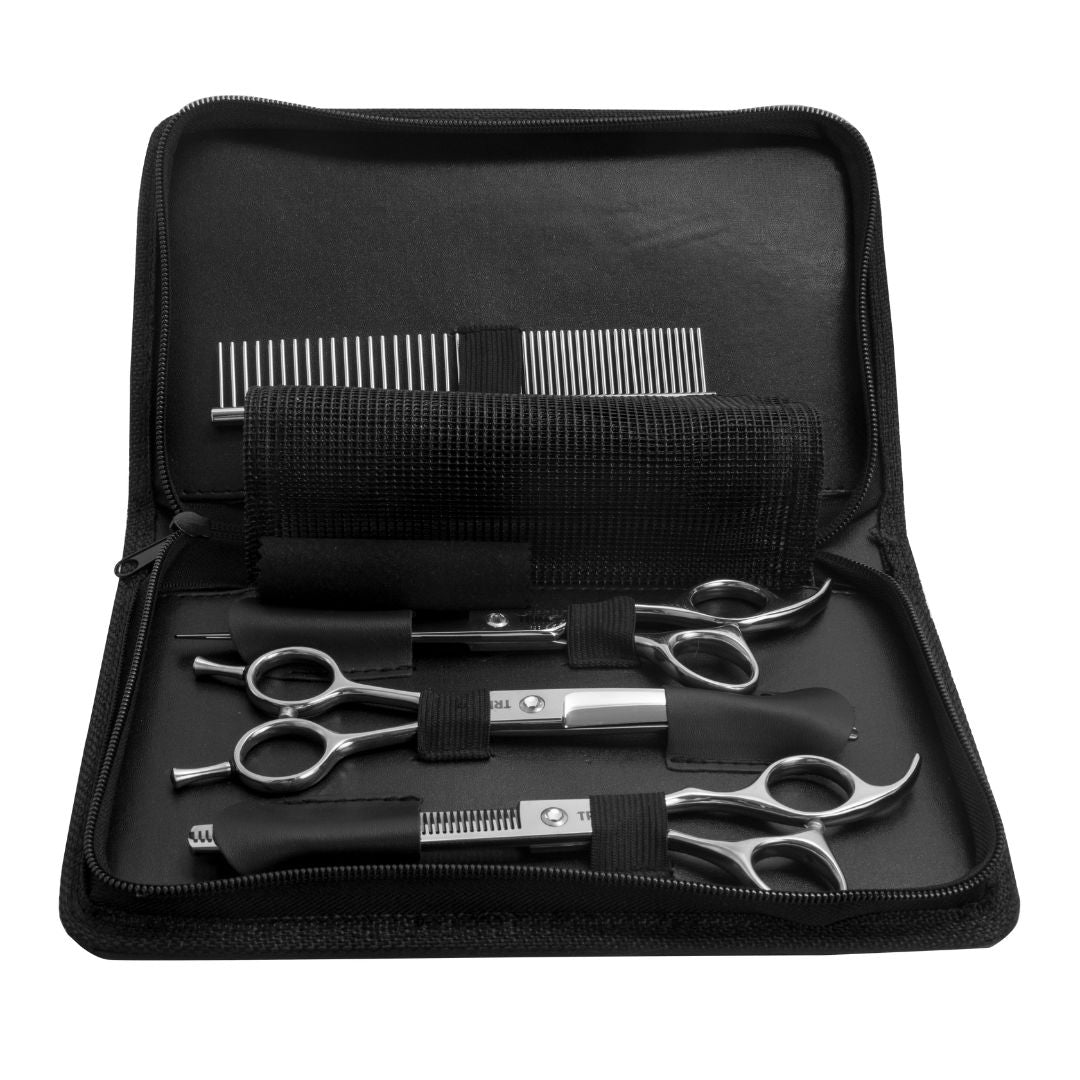Scissoring
Scissoring is slowly becoming the "lost art" of the professional pet stylist. It is a skill that requires practice stylist learn to have full control over any pet while trimming it. For those who become proficient at this skill, the final When you watch a top stylist at work, you quickly a trained eye. With beautiful hand scissoring, the groomer becomes an artist or "stylist." Not only must air shears, they must master the art of safe scissoring to avoid injuring product can be exquisite. When you watch top stylist at work, quickly realize you are watching an artist and begin to understand the skill required of a true master. Top stylists are three-dimensional sculptors and their medium is fur. Balance, style grace, and flair all become working components of a pet with fur that has been sculpted to show off its most positive aspects.

So how, do you learn to become a master of the hand scissor? First, you need to
learn to run your shear smoothly and proficiently. A beginner can learn to do
this through a series of exercises to be practiced without a real pet present. This is the easy part- the mechanics of scissoring. One becomes a highly skilled stylist through learning, understanding and interpreting the dynamics of breed anatomy and proper breed standards.
This is the greater challenge as it takes time, patience and application of sound mechanics. In this section, we will focus on the mechanics of scissoring
Shear Terminology
Shear come in many styles, shapes, and weights. The size of your hand and the
type of coat on which you are working will determine the shear best suited for
the job. One pet may require three or four different shears to obtain the desired trim, all depending on what part of the dog you are working. For example, one shear will be needed to bulk out mass amounts of coat on the body and quite another for detailing a tiny area around the eyes.

The size of your hand and the length of your fingers will make a difference in the size, style, and weight of shears that will be the most comfortable and efficient for you to operate.
The Balance Game
Lay the shear across your scissor hand. With the shear lying across, find the balance point where it will stay level, neither tipping forward through the tip the shear, nor back toward the handles, like a see-saw in perfect balance. This balance point normally will be somewhere close to the "pivot point" (screw head) of the shear. Leave your index finger at that balance point, rotate the shear up on its side and insert your thumb into the thumb hole. Do not let your thumb slide into this ring any farther than your first knuckle. Gently slide your ring finger into the lower ring of the handles. Keep your index finger stretched to the pivot point with your second finger acting as an added stabilizer. The shear should now be in proper position and balanced at right angles to your arm and hand when the wrist is in a neutral, unbent
position.

With shears in a proper position, you are ready to begin the exercises. You must
maintain proper positioning at all times in order for these exercises to be effective.



















Leave a comment
Please note, comments must be approved before they are published
This site is protected by hCaptcha and the hCaptcha Privacy Policy and Terms of Service apply.